OUR PRODUCTS
PREMIUM QUALITY EXTRA VIRGIN OLIVE OILBLANQUETA VARIETY
Native variety of the Valencian Community, originally from Alicante, where it is most widespread in the regions of L’Alcoià and El Comtat. The trees are of medium-low vigour, upright, very productive and regular in the harvesting. The leaf is quite short and flat, with a widening towards the end and a greenish-grey colour. It resists drought well and withstands frosts. It ripens slowly and fall easily, which makes it difficult to harvest by machine.
The fruit has a rooted shape and a whitish colour which turns yellow and reddish or purplish as ripening progresses. Its olives are used for oil, obtaining very good quality oil.
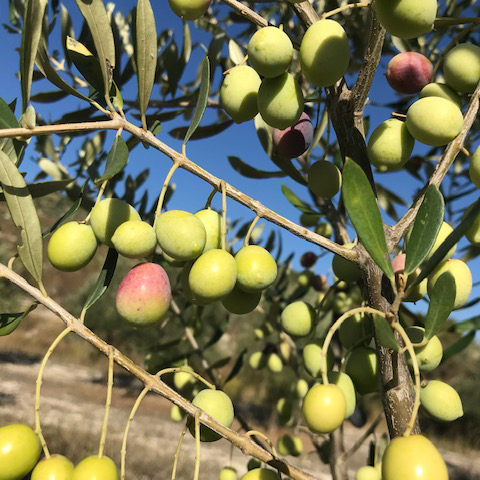
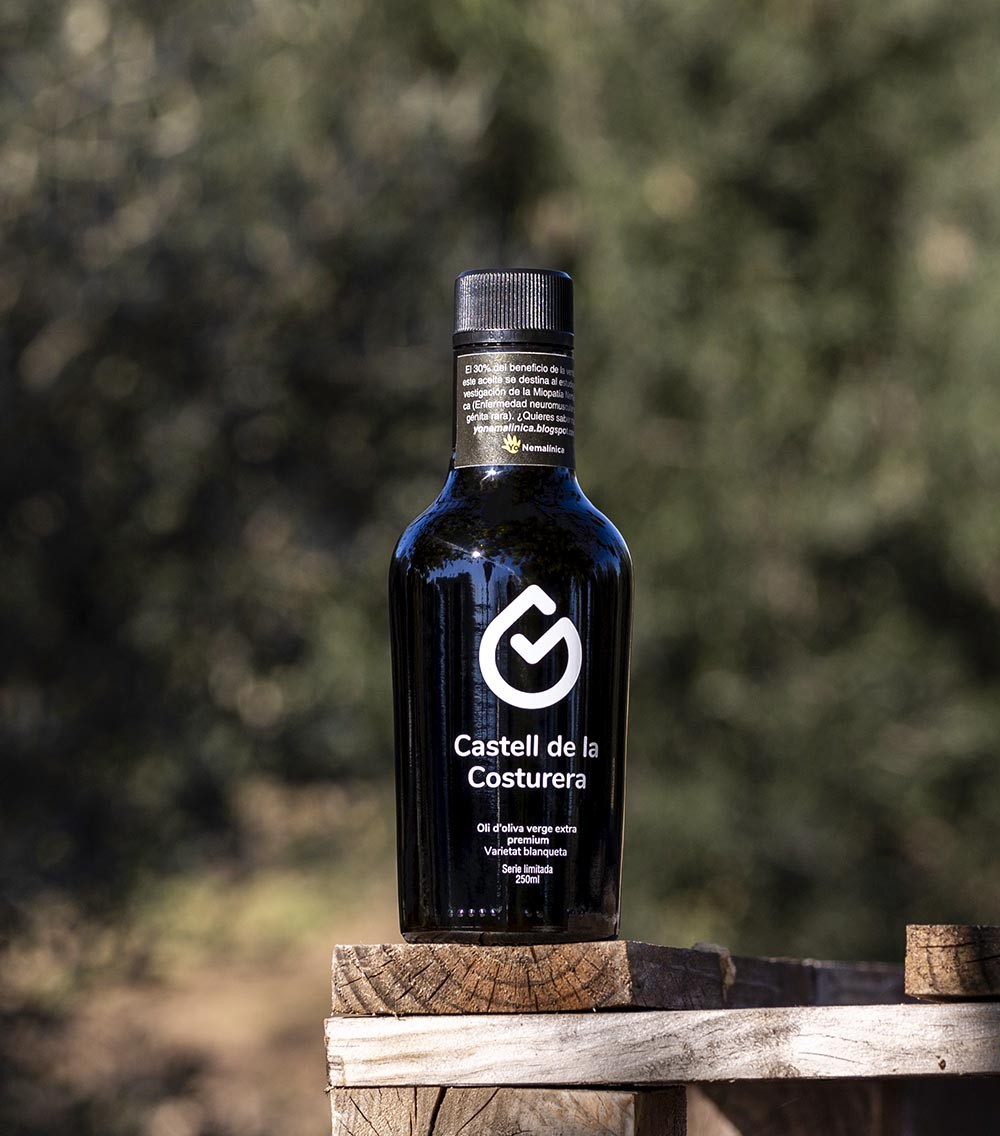
CHARACTERISTICS OF BLANQUETA OIL
It is a complex oil. It has an intense green fruitiness, with fruity, herbaceous and floral aromas.
We find grass, green olives, green banana, tomato, aromas of wild fruits, mint and thyme. In the mouth it is fluid and the spiciness stands out over the bitterness with a good balance.
MAKING OUR QUALITY OLIVE OIL
Early ripening, we harvest between the last week of October and the first week of November. Even though it is resistant to detachment, it is harvested with mechanical vibrators with inverted umbrellas or by hand.
It is taken to the mill to be milled in the morning, a few hours after harvesting so that it does not lose its best organoleptic characteristics. It is milled a few hours after collection and the whole process of beating, centrifuging and decanting is carried out, always below 27ºC, in order to maintain all its qualities.
The filtering process is carried out in two phases with cellulose filters. In the first week, a roughing is done with a lower density filter to eliminate small remains of pulp and stone and in the second week it is done with a finer filter and it is ready to be stored in the tanks until it is bottled. In the cellar we vacuum pack in Bag in Box tanks that protect the oil from light and oxygen, which are the two factors that deteriorate the oil the most. The cellar is kept between 15 and 20ºC, avoiding temperature fluctuations that could alter the quality of the oil.
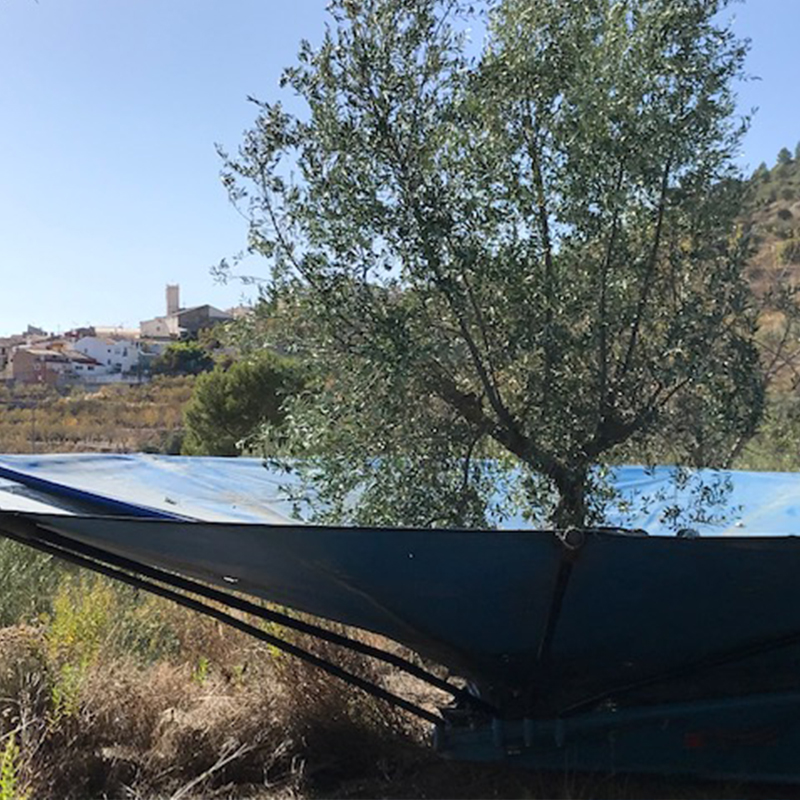
MANÇANELLA DE VILALLONGA VARIETY
It ripens slowly and slowly, letting the ripe fruit fall easily, so it should be harvested when green or at the turning stage. Its olives are used both for dressing and for oil, obtaining a very good quality oil.
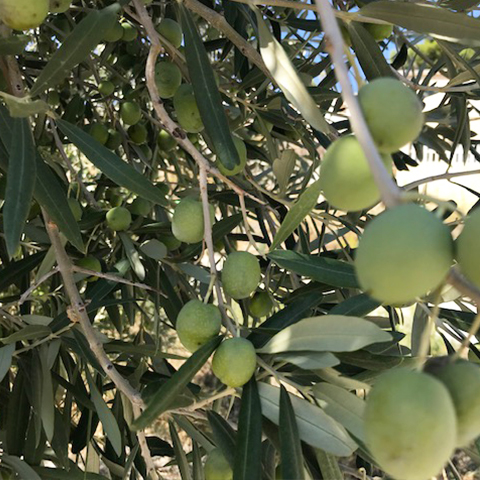

CHARACTERISTICS OF MANÇANELLA DE VILALLONGA OIL
Its oil is medium fruity, with vegetable aromas such as artichoke, green olive and tomato and herbaceous aromas of thyme, green grass and mint. In the mouth it has a medium fluidity and the bitterness stands out over the spiciness.
MAKING OUR QUALITY OLIVE OIL
Due to its early and staggered ripening, we harvest in the second half of October. It is harvested with mechanical inverted umbrella shakers or by hand.
It is taken to the mill for milling in the morning, a few hours after harvesting so that it does not lose its best organoleptic characteristics. It is milled a few hours after collection and the whole process of beating, centrifuging and decanting is carried out, always below 27ºC, in order to maintain all its qualities.
The filtering process is carried out in two phases with cellulose filters. In the first week, a roughing is done with a lower density filter to eliminate small remains of pulp and stone and in the second week it is done with a finer filter and it is ready to be stored in the tanks until it is bottled. In the cellar we vacuum pack in Bag in Box tanks that protect the oil from light and oxygen, which are the two factors that deteriorate the oil the most. The cellar is kept between 15 and 20ºC, avoiding temperature fluctuations that could alter the quality of the oil.
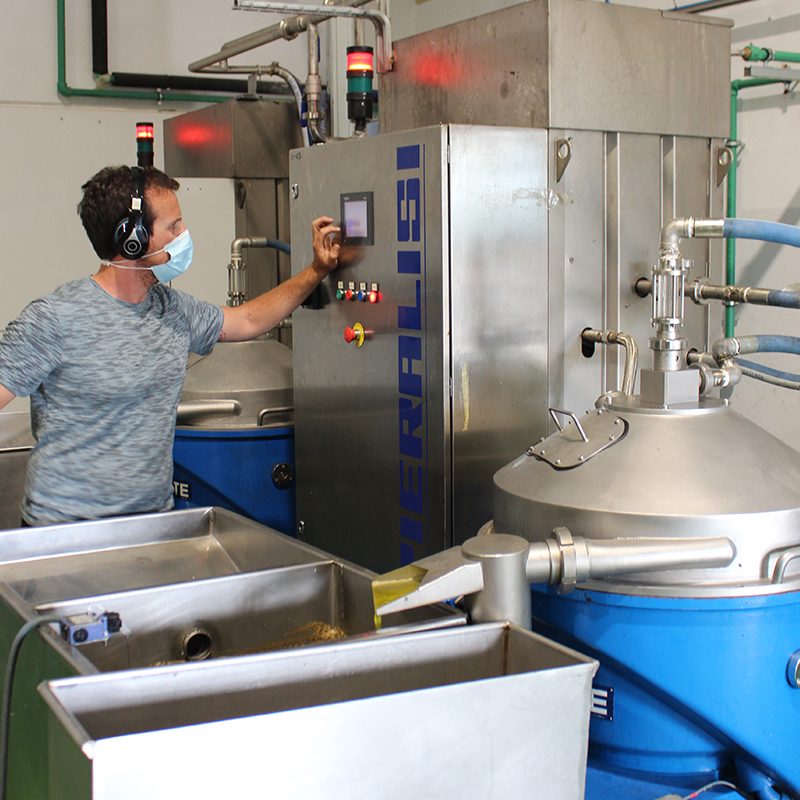
PICUAL VARIETY
It is early maturing, with low resistance to detachment, which facilitates mechanised harvesting. It is used for oil production.
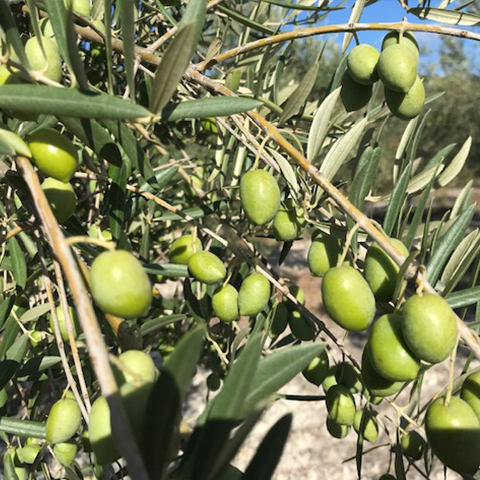

CHARACTERISTICS OF PICUAL OIL
It stands out for being one of the most stable oils due to its high oleic acid content. It has an intense green fruitiness with aromas of fig tree, grass and tomato plant. In the mouth we appreciate the spiciness more than the bitterness.
MAKING OUR QUALITY OLIVE OIL
Due to its early ripening, we harvest in the second half of October. It is harvested with mechanical vibrators with inverted umbrellas or by hand.
It is taken to the mill to be milled in the morning, a few hours after harvesting so that it does not lose its best organoleptic characteristics. It is milled shortly after collection and the whole process of beating, centrifuging and decanting is carried out, always below 27ºC, in order to maintain all its qualities.
The filtering process is carried out in two phases with cellulose filters. In the first week, a roughing is done with a filter of lower density to eliminate small remains of pulp and bone and in the second week it is done with a finer filter and it is ready to be stored in the tanks until it is packaged. In the cellar we vacuum pack in Bag in Box tanks that protect the oil from light and oxygen, which are the two factors that deteriorate the oil the most. The cellar is kept between 15 and 20ºC, avoiding temperature fluctuations that could alter the quality of the oil.
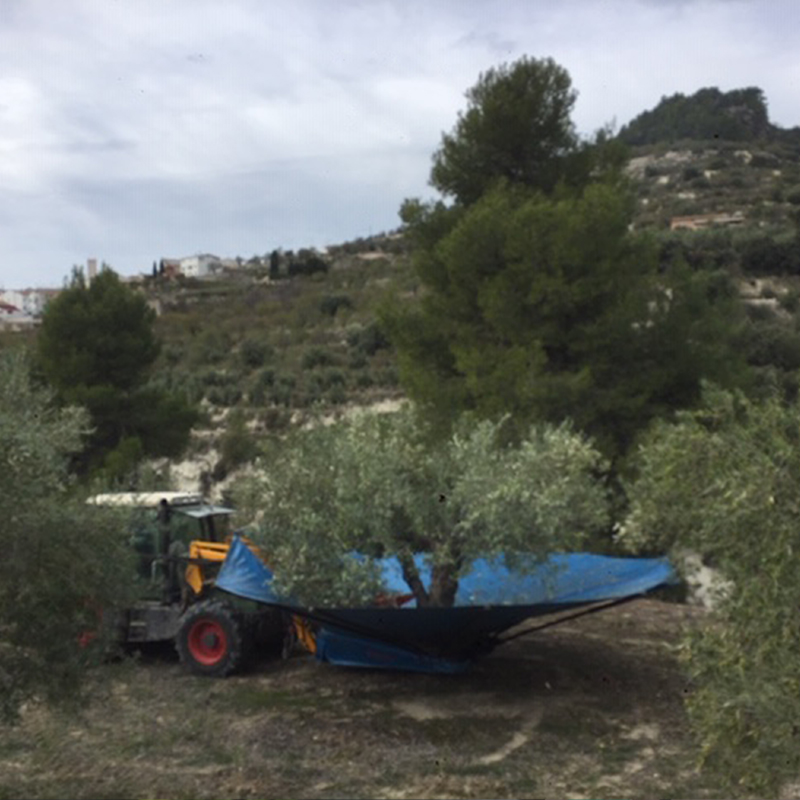
THOUSAND-YEAR-OLD OLIVE TREES
Although the most widespread is the native Mançanella de Vilallonga, this is combined with others typical of the area such as the Blanqueta, the Alfafara, the Genovesa, the Cuquello, the Grossal and others unknown to us that sprout from the lower parts of the old trunks. So in this case we cannot talk about the characteristics and the size of the tree, but rather admire its robustness, its obvious adaptation to these lands and discover its varietal diversity that gives it different shapes and colours.

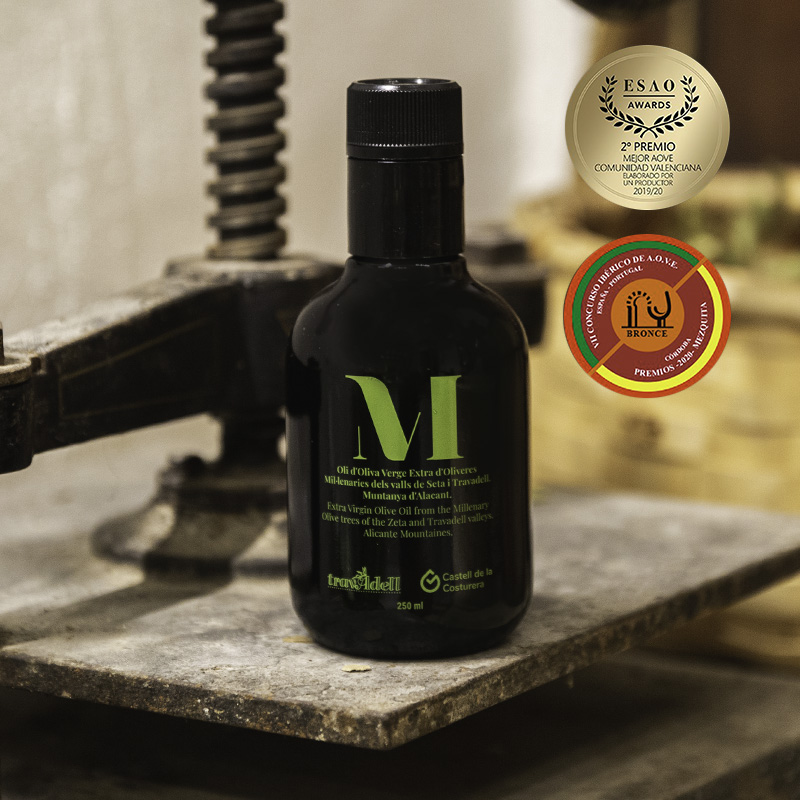
CHARACTERISTICS OF OIL FROM THOUSAND-YEAR-OLD OLIVE TREES
The EVOO obtained is a singular and unique blend due to the different varieties it contains.
This year we can say that it has a green fruity of medium intensity. Herbaceous and floral aromas, in which we find, mint, grass, artichoke, almond, with floral notes of lavender and thyme. Good balance of bitterness and spiciness, with an intense and pleasant aftertaste.
MAKING OUR QUALITY OLIVE OIL
We harvest in October and concentrate the harvest in one weekend. It is harvested by shaking and in some cases with hand shakers.
It is taken to the mill to be milled in the morning, a few hours after harvesting so that it does not lose its best organoleptic characteristics. It is milled shortly after collection and the whole process of beating, centrifuging and decanting is carried out, always below 27ºC, in order to maintain all its qualities.
The filtering process is carried out in two phases with cellulose filters. In the first week, a roughing is done with a lower density filter to eliminate small remains of pulp and stone and in the second week it is done with a finer filter and it is ready to be stored in the tanks until it is bottled. In the cellar we vacuum pack in Bag in Box tanks that protect the oil from light and oxygen, which are the two factors that deteriorate the oil the most. The cellar is kept between 15 and 20ºC, avoiding temperature fluctuations that could alter the quality of the oil.


